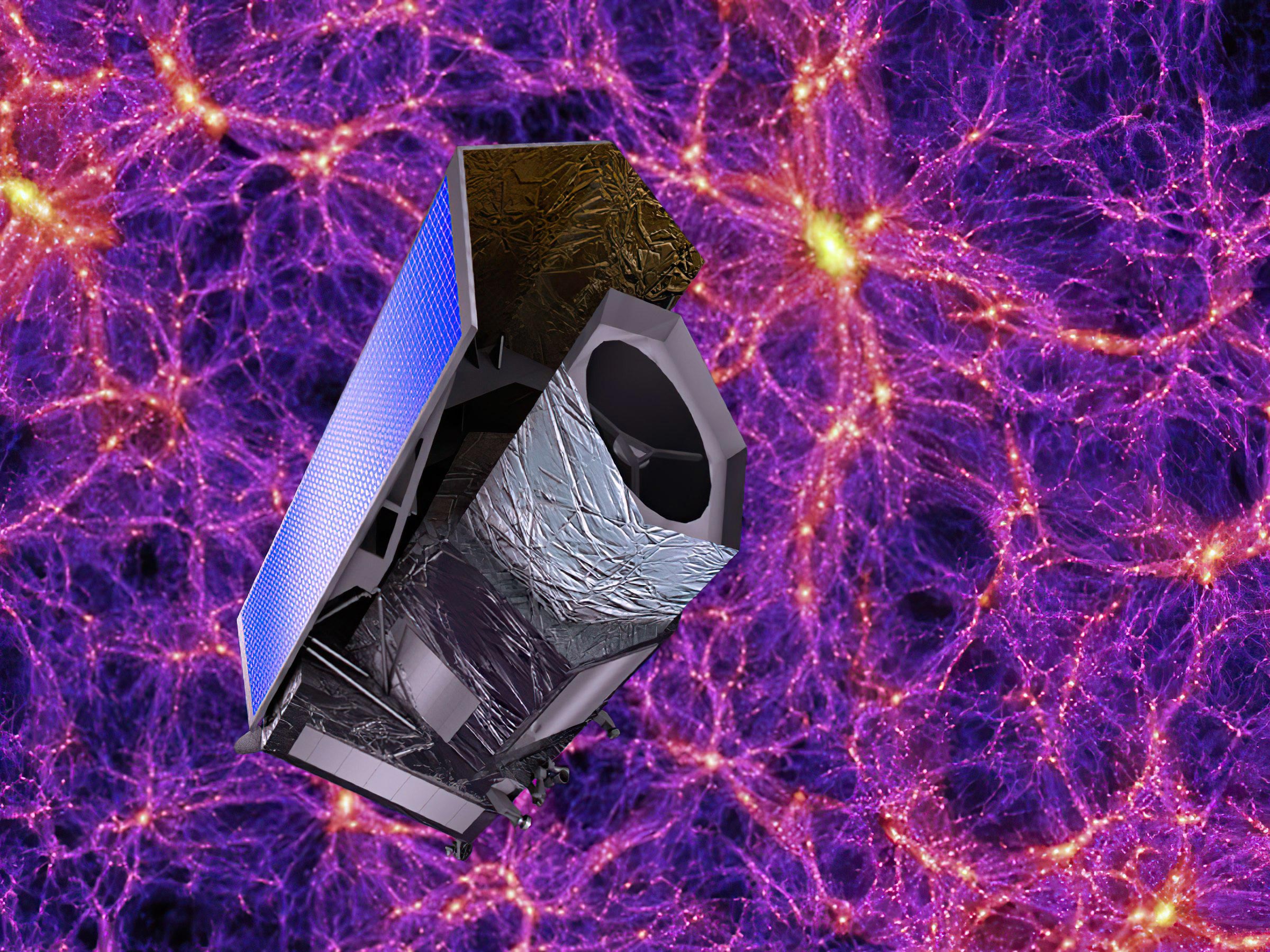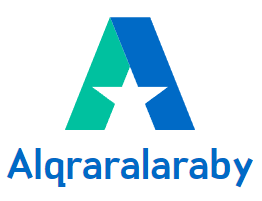
في 1 يوليو 2023 ، أطلقت المركبة الفضائية إقليدس التي تديرها وكالة الفضاء الأوروبية (ESA) بنجاح من محطة كيب كانافيرال للقوة الفضائية على صاروخ سبيس إكس فالكون 9. تهدف المركبة الفضائية إلى استكشاف العناصر الغامضة للكون والمادة المظلمة والطاقة المظلمة. الائتمان: SpaceX
أطلقت المركبة الفضائية Euclid التابعة لوكالة الفضاء الأوروبية ESA في الساعة 11:12 صباحًا على صاروخ SpaceX Falcon 9 من محطة Cape Canaveral Space Force Station في فلوريدا ، الولايات المتحدة الأمريكية.[{” attribute=””>EDT on July 1, 2023. The successful launch marks the beginning of an ambitious mission to uncover the nature of two mysterious components of our Universe: dark matter and dark energy, and to help us answer the fundamental question: what is the Universe made of?
Following launch and separation from the rocket, ESA’s European Space Operations Centre (ESOC) in Darmstadt, Germany, confirmed acquisition of signal from Euclid via the New Norcia ground station in Australia at 17:57 CEST (11:57 a.m. EDT).
https://www.youtube.com/watch؟v=wbWA1OhHeCA
تم إطلاق مركبة الفضاء Euclid التابعة لوكالة الفضاء الأوروبية (ESA) بنجاح في 1 يوليو 2023 لاستكشاف طبيعة المادة المظلمة والطاقة المظلمة في الكون. ستنشئ خريطة ثلاثية الأبعاد دقيقة للكون من خلال مراقبة بلايين المجرات واستخدام أدوات علمية متقدمة لتحليل هذه المجرات. ستستمر المهمة ست سنوات وستوفر مسحًا غير مسبوق للسماء. دَين:[{” attribute=””>SpaceX
“The successful launch of Euclid marks the beginning of a new scientific endeavor to help us answer one of the most compelling questions of modern science,” says ESA Director General Josef Aschbacher. “Euclid has been made possible by ESA’s leadership, the effort and expertise of hundreds of European industrial and scientific institutions, and through collaboration with international partners. The quest to answer fundamental questions about our cosmos is what makes us human. And, often, it is what drives the progress of science and the development of powerful, far-reaching, new technologies. ESA is committed to expanding Europe’s ambitions and successes in space for future generations.”

On July 1, 2023, at 11:12 a.m. EDT, ESA’s latest astrophysics mission, Euclid, lifted off on a Space X Falcon 9 from Cape Canaveral in Florida, USA. Euclid has now started its month-long journey to Sun-Earth Lagrange point L2, located 1.5 million kilometers from Earth, in the opposite direction from the Sun. Credit: ESA – S. Corvaja
“The Euclid mission is the result of the passion and expertise of those who contributed to designing and building this sophisticated space telescope, the competence of our flight operations team, and the inquiring spirit of the science community,” says Giuseppe Racca, ESA’s Euclid Project Manager. “There have been many challenges during the project, but we have worked hard and now we have successfully reached this launch milestone together with our partners in the Euclid Consortium and NASA.”
The Euclid Consortium contributed the two highly advanced scientific instruments – the visible-wavelength camera (VIS) and the Near-Infrared Spectrometer and Photometer (NISP). NASA provided the detectors for NISP.

ESA’s Euclid will examine visible and infrared light from distant galaxies using two scientific instruments on board. These instruments will measure the accurate position and shapes of galaxies in visible light, and their redshift (from which their distance can be derived) in the infrared light. With these data, scientists can construct a 3D map of the distributions of both the galaxies and the dark matter in the Universe. The map will show how large-scale structure evolved over time, tracing the role of dark energy.
The VISible instrument (VIS) takes very sharp images of galaxies over a much larger fraction of sky than would be possible from the ground. These observations will be used to measure the shapes of over a billion galaxies.
As the name suggests, VIS collects visible light. It is sensitive to wavelengths from green (550 nanometres) up to near infrared (900 nm). The instrument uses a mosaic of 36 CCDs (Charge Coupled Devices, a type of camera sensor), each of which contains more than 4000 pixels by 4000 pixels. This gives the detector a total of about 600 megapixels, equivalent to almost seventy 4K resolution screens.
Near-Infrared Spectrometer and Photometer (NISP) is dedicated to making spectroscopic measurements of galaxies, which involves determining how much light they emit per wavelength. This is useful for measuring the galaxies’ redshift, which cosmologists can use to estimate the distance to each galaxy. NISP has the largest field of view for an infrared instrument ever flown in space. The instrument measures near-infrared light (900–2000 nm) using a grid of 16 detectors, each containing more than 2000 by 2000 pixels.
Credit: ESA
Exploring the dark Universe
Euclid will observe billions of galaxies out to 10 billion light-years to create the largest, most accurate 3D map of the Universe, with the third dimension representing time itself. This detailed chart of the shape, position, and movement of galaxies will reveal how matter is distributed across immense distances and how the expansion of the Universe has evolved over cosmic history, enabling astronomers to infer the properties of dark energy and dark matter. This will help theorists to improve our understanding of the role of gravity and pin down the nature of these enigmatic entities.
“Today we celebrate the successful launch of a ground-breaking mission that places Europe at the forefront of cosmological studies,” says Carole Mundell, ESA’s Director of Science. “If we want to understand the Universe we live in, we need to uncover the nature of dark matter and dark energy and understand the role they played in shaping our cosmos. To address these fundamental questions, Euclid will deliver the most detailed map of the extra-galactic sky. This inestimable wealth of data will also enable the scientific community to investigate many other aspects of astronomy, for many years to come.”
https://www.youtube.com/watch؟v=GhJFvtvgwmc
صُممت مهمة إقليدس التابعة لوكالة الفضاء الأوروبية للكشف عن خصائص وتأثيرات المادة المظلمة المحيرة والطاقة المظلمة ، والتي يُعتقد أنها تهيمن على تكوين الكون ولكن لم يتم اكتشافها بشكل مباشر. سينشئ إقليدس خريطة ثلاثية الأبعاد للكون ، باستخدام الوقت كبعد ثالث له ، متتبعًا مليارات المجرات التي تبعد 10 مليارات سنة ضوئية. سيساعد هذا التعيين التفصيلي العلماء على رسم مواقع وسرعات المجرات. الائتمان: ESA
لتحقيق هدفه العلمي الطموح ، تم تجهيز إقليدس بالتلسكوب العاكس الذي يبلغ طوله 1.2 مترًا ، والذي يغذي أداتين علميتين مبتكرتين: VIS ، التي تلتقط صورًا حادة جدًا للمجرات على مساحة كبيرة من السماء ، و NISP ، والتي يمكنها تحليل الأشعة تحت الحمراء للمجرات. يحدد الضوء بدقة المسافة بينهما من خلال الطول الموجي.
سيتم التحكم في المركبات الفضائية والاتصالات من ESOC. للتعامل مع الكم الهائل من البيانات التي يتلقاها إقليدس ، تمت ترقية شبكة Estrac والهوائيات الفضائية التابعة لوكالة الفضاء الأوروبية. سيتم تحليل البيانات من قبل Euclid Consortium ، وهي مجموعة تضم أكثر من 2000 عالم من أكثر من 300 مؤسسة في أوروبا والولايات المتحدة وكندا واليابان.

أما بالنسبة لبعثات وكالة الفضاء الأوروبية الأخرى ، فإن بيانات المركبات الفضائية تنتقل عبر المحطات الأرضية حول العالم إلى مركز عمليات الفضاء الأوروبية (ESOC) التابع لوكالة الفضاء الأوروبية (ESOC) في ألمانيا.
يتم إرسال البيانات الأولية إلى المركز الأوروبي لعلم الفلك الفضائي (ESAC) في إسبانيا. يتم توزيع البيانات الواردة من ESAC إلى مراكز المعالجة التابعة لقسم الأرضية العلمية التابع لاتحاد إقليدس ومقره في عدة دول أوروبية والولايات المتحدة.
اتحاد إقليدس (EC) هو منظمة تضم أكثر من 2000 باحث ومهندس وفني وموظف إداري في الفيزياء النظرية والفيزياء الفلكية وعلم الفلك الفضائي. تم تعيينه من قبل وكالة الفضاء الأوروبية على أنه اتحاد علمي رسمي واحد مسؤول عن إنتاج الأدوات والبيانات العلمية وقيادة الاستغلال العلمي للبعثة حتى اكتمالها.
قسم EC Science Ground هو المسؤول عن تصميم واختبار التطوير ودمج وتشغيل أدوات معالجة البيانات وخطوط الأنابيب ومراكز البيانات. تشمل منتجات البيانات المعالجة الصور والأطياف المُعايرة ، وقوائم ووثائق القياسات العلمية.
على فترات منتظمة ، يتم إتاحة كنز إقليدس من البيانات المعالجة للجمهور للمجتمع عبر أرشيف العلوم الفلكية في ESAC. من ESAC يتم التخطيط للعمليات العلمية ، وسيتم أرشفة جميع البيانات العلمية التي تنتجها بعثة ESA وإتاحتها للعالم.
الائتمان: ESA
مع تقدم المهمة ، سيتم نشر كنز إقليدس من البيانات سنويًا وإتاحته للمجتمع العلمي العالمي من خلال أرشيف علمي يستضيفه المركز الأوروبي لعلم الفلك الفضائي التابع لوكالة الفضاء الأوروبية في إسبانيا.
يقول رينيه لوريجيس ، عالم مشروع إقليدس في وكالة الفضاء الأوروبية: “هذه لحظة عظيمة للعلم ، ونحن ننتظرها لفترة طويلة: إطلاق إقليدس نحو فهم أحجية المادة المظلمة والطاقة المظلمة”. “يحدق فينا اللغز الكبير للعناصر الأساسية للكون ، ويمثل تحديًا هائلاً. بفضل التلسكوب المتقدم والأدوات العلمية القوية ، فإن إقليدس على استعداد لمساعدتنا في كشف هذا اللغز.

سيدور إقليدس التابع لوكالة الفضاء الأوروبية حول نقطة لاغرانج الثانية (L2) على بعد 1.5 مليون كيلومتر من الأرض في الاتجاه المعاكس للشمس. L2 هي نقطة التوازن لنظام الشمس والأرض الذي يتبع الأرض حول الشمس.
في مداره في L2 ، يحجب الدرع الشمسي لإقليدس الضوء من الشمس والأرض والقمر بينما يوجه تلسكوبه نحو الفضاء السحيق ، مما يضمن قدرًا أكبر من الاستقرار لأجهزته.
في L2 ، انضمت مهمة Gaia التابعة لوكالة ESA وإقليدس إلى تلسكوب جيمس ويب الفضائي ESA / NASA / CSA ، والذي يدور أيضًا حول نقطة التوازن هذه ، كل منها يتبع مسارات منفصلة جيدًا.
الائتمان: ESA
رحلة إلى لاجرانج بوينت 2
خلال الأسابيع الأربعة المقبلة ، سوف يسافر إقليدس في الاتجاه المعاكس من الشمس إلى نقطة لاجرانج 2 من الشمس والأرض ، وهي نقطة التوازن لنظام الشمس والأرض ، على بعد 1.5 مليون كيلومتر من الأرض (أربعة أضعاف المسافة بين الأرض والقمر) . هناك ، سيتم مناورة إقليدس في مدار حول هذه النقطة وسيتحقق مراقبو المهمة من جميع وظائف المركبة الفضائية ، ويفحصون التلسكوب ويبدأون أخيرًا الخطوات لتشغيل الأدوات العلمية.
سينخرط العلماء والمهندسون في مرحلة مكثفة مدتها شهران لإعداد أدوات إقليدس العلمية للاختبار والقياسات والملاحظات الروتينية. في غضون ست سنوات ، قام إقليدس بإجراء مسح غير مسبوق لثلث السماء[{” attribute=””>accuracy and sensitivity.

ESA’s Euclid mission is a highly ambitious project undertaken by the European Space Agency (ESA) to investigate and understand the nature of two enigmatic components of our Universe: dark matter and dark energy. Launched on July 1, 2023, the spacecraft will observe billions of galaxies up to 10 billion light-years away to construct the most accurate 3D map of the Universe ever made. Credit: ESA
About Euclid
Euclid is a European mission, built and operated by ESA, with contributions from NASA. The Euclid Consortium is responsible for providing the scientific instruments and scientific data analysis. ESA selected Thales Alenia Space as prime contractor for the construction of the satellite and its service module, with Airbus Defence and Space chosen to develop the payload module, including the telescope. NASA provided the detectors of the Near-Infrared Spectrometer and Photometer, NISP. Euclid is a medium-class mission in ESA’s Cosmic Vision Programme.

“محامي القهوة. بيكون نينجا. قارئ ودود. حلال مشاكل. هواة طعام حائز على جائزة.”

/cdn.vox-cdn.com/uploads/chorus_asset/file/25439282/640.jpg)



More Stories
تنقسم المحكمة العليا في كاليفورنيا بشأن عرقلة المبادرة الضريبية
لن يرى الأمير هاري الملك تشارلز خلال رحلته إلى إنجلترا لحضور احتفالات Invictus
العثور على جثة ضحية انهيار جسر بالتيمور